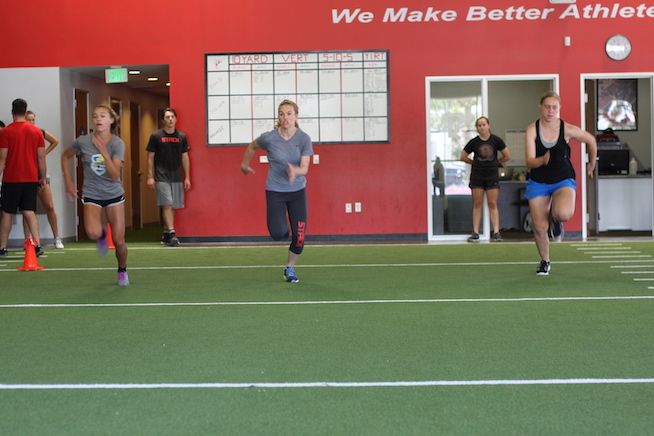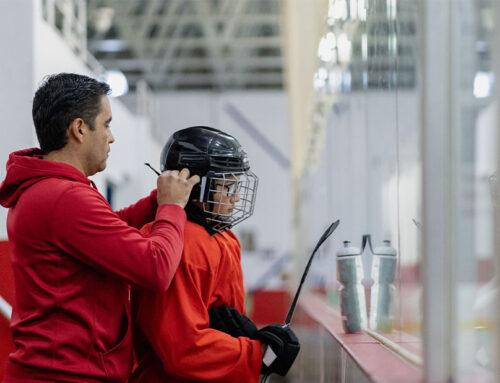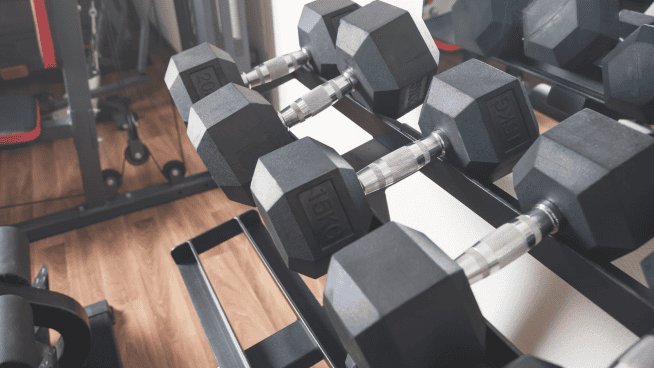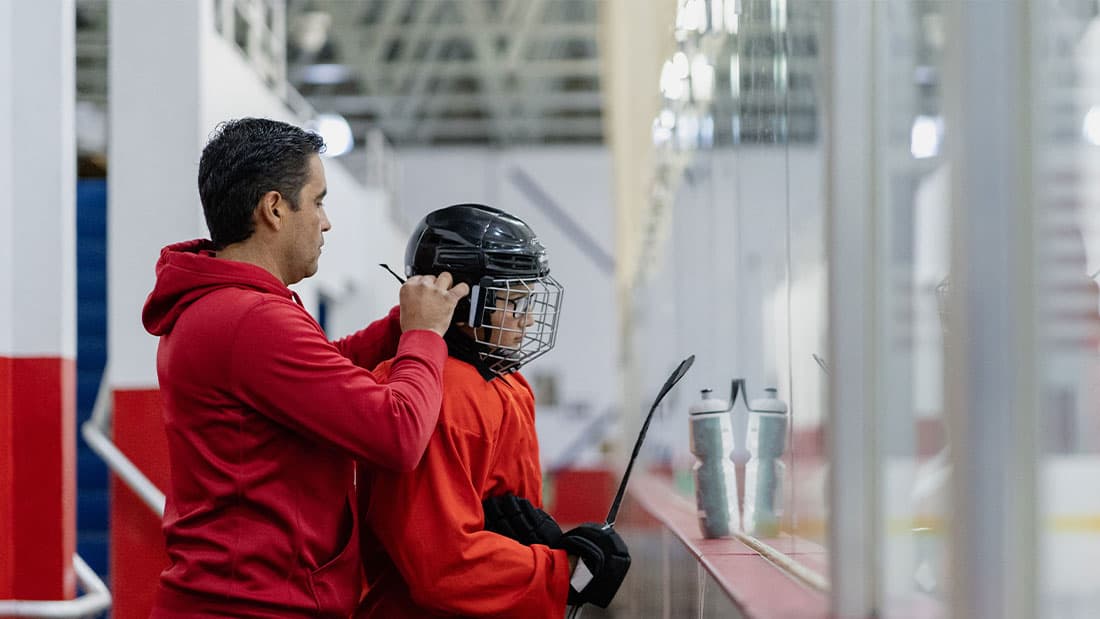How to Dominate the Soccer Conditioning Beep Test
The Balls-out, Epic, Energy-sucking (but) Profoundly Insightful Test: Yes, that is the Beep Test.
The Beep Test and its most recent alternative, the Yo-Yo Test, measure an athlete’s ability to repeatedly perform timed intervals over a prolonged period. Upon hearing each beep, athletes must run between two sets of cones that are 20 meters (or 22 yards) apart, and the beeps come faster each time.
In the Yo-Yo Test, athletes walk 5 meters (or 5.5 yards) and back after each level, which serves as an active recovery period. Both tests permit one fault, meaning an athlete was unable to run back to the last cone before the beep. After the second fault, your score is recorded, and your body is allowed to recover.
For many athletes, the Beep Test is considered one of the best measures of cardio, aerobic fitness. It tests speed, stamina and mental toughness. With the sound of each beep, your hard work and commitment to training are on display, and if you do well, you might have an advantage over another player when competing for more playing time.
What the test requires—speed, stamina and mental toughness—are good indications of your athletic performance and improvement, which can subsequently inform your progress toward your fitness and athletic goals.
Pacing Strategies
Since the beeps increase in frequency at each level, it’s important to pace yourself. Don’t run too fast in the beginning, otherwise you will tire out before you know it. Set your running pace in sync with the beeps to preserve your energy and increase your endurance. If you know you are getting close to not making a beep, stick your hand out to ensure you pass and make it to the next level.
Mental Toughness
When running the Beep Test, mentally set yourself a level goal that you want to reach that day, and hold yourself accountable to reach that level. If it helps to tell a coach or a teammate the level you aspire to, do it. They will push and motivate you when fatigue starts to set in.
RELATED: 5 Pillars of Mental Toughness
Eat Well and Hydrate Beforehand
Enough said.
Cardio and Fitness
To succeed in the test, you must have a good cardio base. Practicing the beep test over and over is one way to achieve this. Others are to run 2 to 5 miles a few times a week, or run timed shuttles and/or sprints at a local track. From personal experience, I have found running timed 120-meter, 400-meter and 800-meter sprints is one of the best ways to prepare for the test.
Environment
If possible, practice the Beep Test in an environment similar to the one in which you will be tested (e.g., grass, artificial turf, hot weather. etc.) to make sure your body is ready and acclimated to the test setting. Also, it’s always best to practice the test with a companion or a group, since you will certainly be more competitive and motivated with people around you.
Strength
Being strong allows you to run faster because you can better accelerate and propel yourself forward. Focus on exercises that target primary leg muscles such as the quad, hamstring, glutes, and calves to increase your quickness.
Efficient strides
Performance coaches who lead the Competitive and Elite classes at STACK Velocity Sports Performance preach elongating your strides, aggressively driving your knees up, minimizing foot time on the ground, pointing your toes up and using your arms to increase your speed.
RELATED: The Beep Test With the Maryland Men’s Soccer Team
Turn Efficiently
Efficient turns can make the difference between getting to the next level and faulting. When you approach the farthest cone, lower your hips and plant one foot beside the cone. Pivot your body and other foot and aggressively punch your knee forward toward the other cone. Pushing off firmly on your first strides with aggressive knee punch after the pivot helps you accelerate quickly.
RECOMMENDED FOR YOU
MOST POPULAR
How to Dominate the Soccer Conditioning Beep Test
The Balls-out, Epic, Energy-sucking (but) Profoundly Insightful Test: Yes, that is the Beep Test.
The Beep Test and its most recent alternative, the Yo-Yo Test, measure an athlete’s ability to repeatedly perform timed intervals over a prolonged period. Upon hearing each beep, athletes must run between two sets of cones that are 20 meters (or 22 yards) apart, and the beeps come faster each time.
In the Yo-Yo Test, athletes walk 5 meters (or 5.5 yards) and back after each level, which serves as an active recovery period. Both tests permit one fault, meaning an athlete was unable to run back to the last cone before the beep. After the second fault, your score is recorded, and your body is allowed to recover.
For many athletes, the Beep Test is considered one of the best measures of cardio, aerobic fitness. It tests speed, stamina and mental toughness. With the sound of each beep, your hard work and commitment to training are on display, and if you do well, you might have an advantage over another player when competing for more playing time.
What the test requires—speed, stamina and mental toughness—are good indications of your athletic performance and improvement, which can subsequently inform your progress toward your fitness and athletic goals.
Pacing Strategies
Since the beeps increase in frequency at each level, it’s important to pace yourself. Don’t run too fast in the beginning, otherwise you will tire out before you know it. Set your running pace in sync with the beeps to preserve your energy and increase your endurance. If you know you are getting close to not making a beep, stick your hand out to ensure you pass and make it to the next level.
Mental Toughness
When running the Beep Test, mentally set yourself a level goal that you want to reach that day, and hold yourself accountable to reach that level. If it helps to tell a coach or a teammate the level you aspire to, do it. They will push and motivate you when fatigue starts to set in.
RELATED: 5 Pillars of Mental Toughness
Eat Well and Hydrate Beforehand
Enough said.
Cardio and Fitness
To succeed in the test, you must have a good cardio base. Practicing the beep test over and over is one way to achieve this. Others are to run 2 to 5 miles a few times a week, or run timed shuttles and/or sprints at a local track. From personal experience, I have found running timed 120-meter, 400-meter and 800-meter sprints is one of the best ways to prepare for the test.
Environment
If possible, practice the Beep Test in an environment similar to the one in which you will be tested (e.g., grass, artificial turf, hot weather. etc.) to make sure your body is ready and acclimated to the test setting. Also, it’s always best to practice the test with a companion or a group, since you will certainly be more competitive and motivated with people around you.
Strength
Being strong allows you to run faster because you can better accelerate and propel yourself forward. Focus on exercises that target primary leg muscles such as the quad, hamstring, glutes, and calves to increase your quickness.
Efficient strides
Performance coaches who lead the Competitive and Elite classes at STACK Velocity Sports Performance preach elongating your strides, aggressively driving your knees up, minimizing foot time on the ground, pointing your toes up and using your arms to increase your speed.
RELATED: The Beep Test With the Maryland Men’s Soccer Team
Turn Efficiently
Efficient turns can make the difference between getting to the next level and faulting. When you approach the farthest cone, lower your hips and plant one foot beside the cone. Pivot your body and other foot and aggressively punch your knee forward toward the other cone. Pushing off firmly on your first strides with aggressive knee punch after the pivot helps you accelerate quickly.
[cf]skyword_tracking_tag[/cf]










